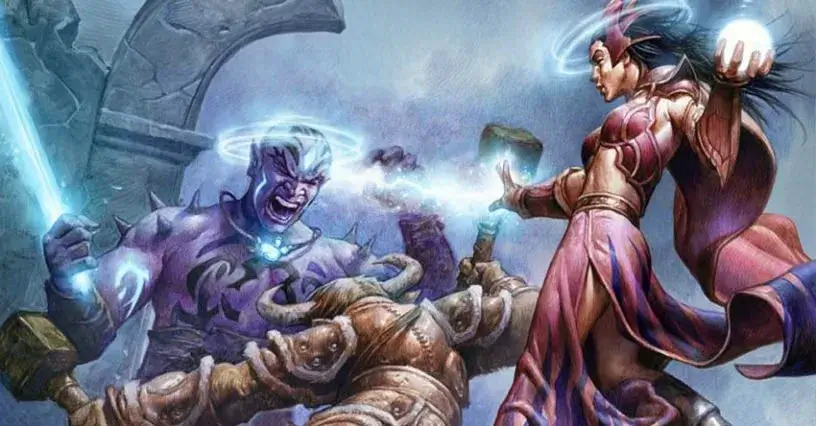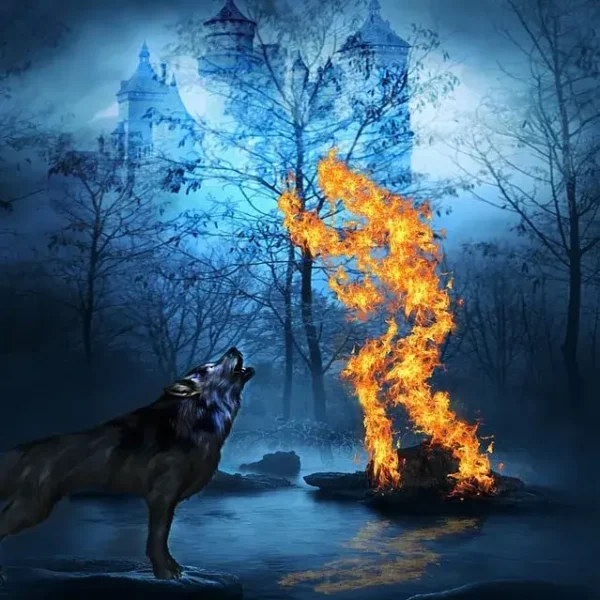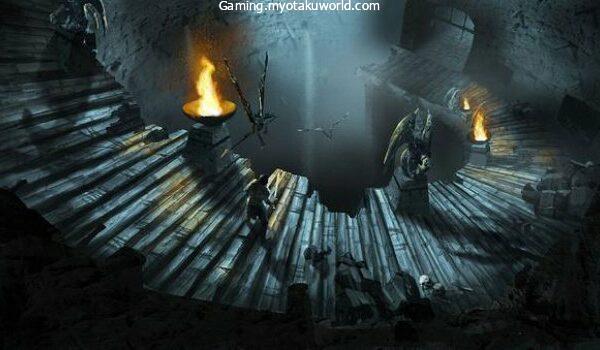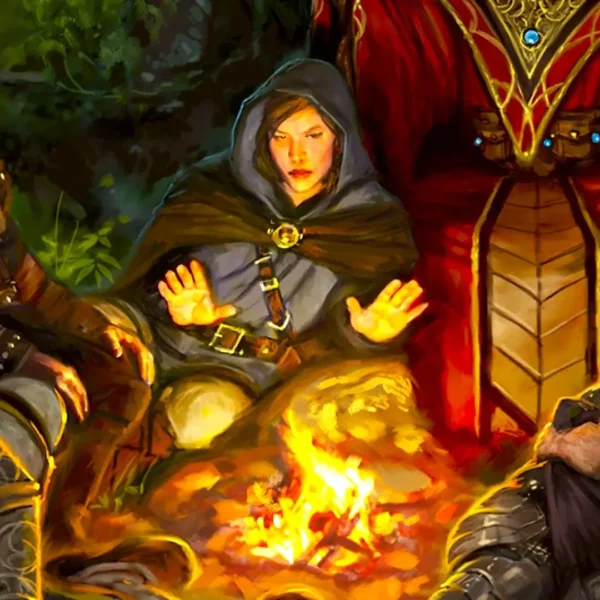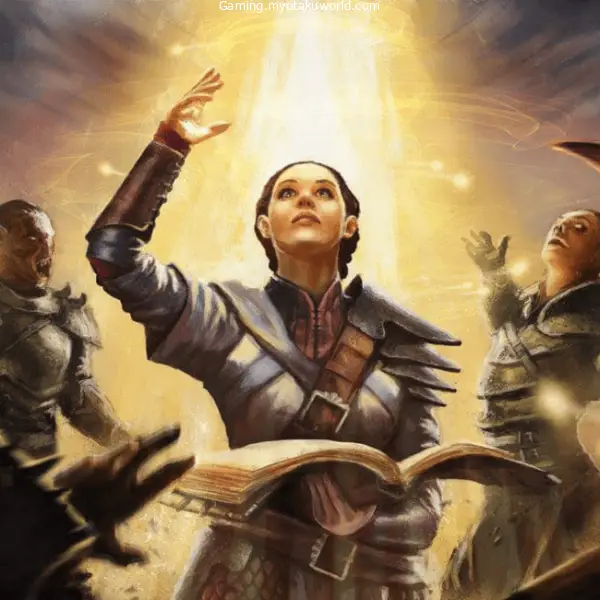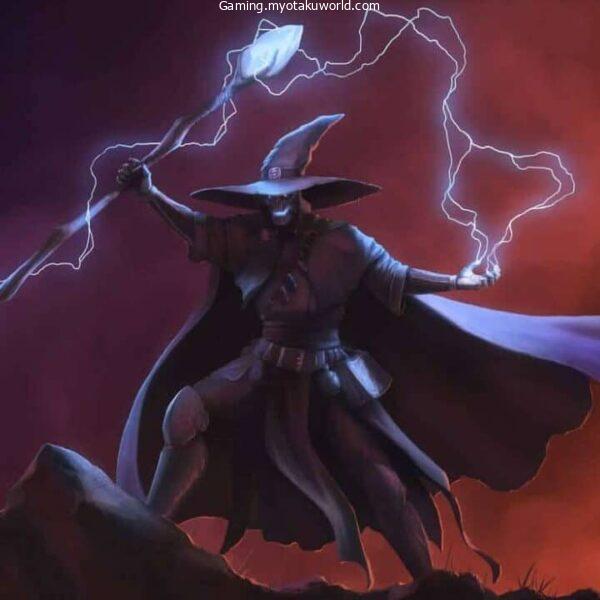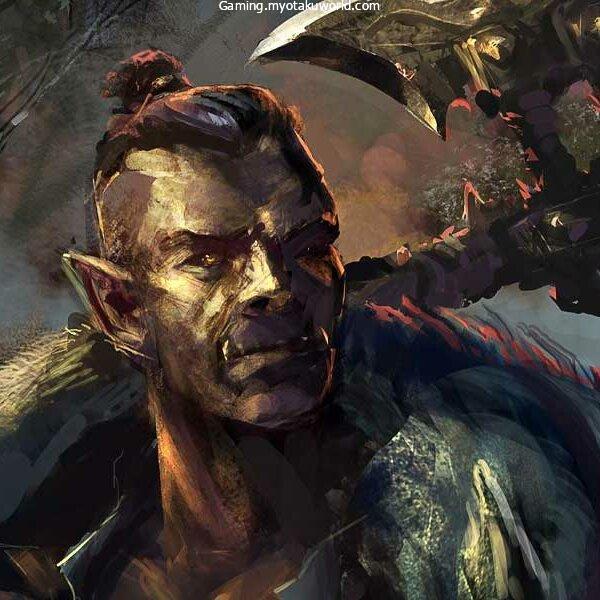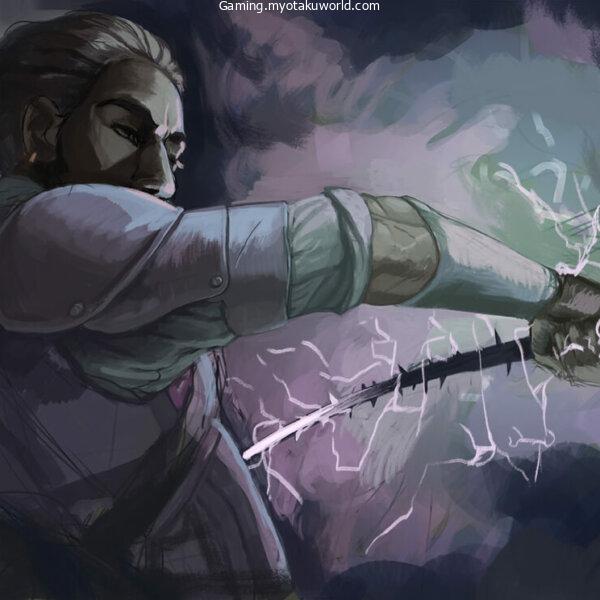The new classes are something players love to look forward to when it comes to new D&D books or supplements.
The Kalashatars, who were introduced in the book ‘Races of The Eberron’, have been captivating hearts ever since with their unique backstory and lore.
What classes work best with a Kalashtar?
How can you effectively roleplay one?
Why are they so much fun?
What makes them so fun?
What is a Kalashtar?
Although the lore is complicated, it can be summarized as humanoids who are bound to The Plane of Dreams.
They are possessed by a dream spirit called a quori, which helps them to resist psionic attacks. It also gives clues to their hosts about what they would like to see.
Their host cannot communicate with them except for bright lights that appear around objects they wish to examine.
Without a mortal mind, the quote can’t live beyond the plane of dreams. This is why the Kalashtar merged with them.
Two types of quori exist in Eberron. The first is those who combine with Kalashtars on the mortal plane known as the Path of Light.
Others, who are more sinister, live in the dreaming darkness and seek to destroy.
What is Kalashtar Like?
Most Kalashtar was raised as monks and taught to control emotions and their latent psychic abilities.
The spirit that lives within them can make their eyes glow when they tap into their psionic powers, even if they lose their measured façade.
Although the spirit cannot talk to their host, they may have similar goals and motivations to each other or take different approaches to things.
Many Kalashtar look vaguely elven-like or half-elven, so they often adopt these races when working with adventurers.
How does Kalashtar work with Stats?

These are the benefits Kalastar enjoys when you play as them. All from the Races of the Ebberon Book.
- Dual mind: This gives you an advantage over all Wisdom saving throws.
- Alignment: A kalashtar’s noble spirit drives it to lawful and good conduct. While most kalashtar are strong in self-discipline and compassion for all living beings, some kalashtar resist this virtuous influence.
- Mental Discipline
Two new abilities are available that can make the game more fun. Mind Link is the first. You can talk telepathically to any creature within 10 feet of you, as long as it is within 10 times your level.
The creature doesn’t have to be able to understand your telepathic words, but you must share a language.
You can use this trait to communicate telepathically to a creature. Your action will give the creature the ability to talk telepathically for up to an hour, or until you stop this effect.
This ability can only be used by creatures that can see you or are within the range of this trait.
This ability can only be given to one creature at a while. If you give it to another creature, it will take it away.
This ability allows you to communicate telepathically with any creature that you see. If you allow them to, they can also communicate with you. Telepathy is an interesting skill that can change the way you play.
The Severed From Dreams ability is Kalashtar sleep. However, they are not able to connect to the planes of dreams like other creatures.
Their minds instead draw upon the memories of their otherworldly spirit as they sleep.
You are therefore immune to magical effects and spells that make you dream, such as a dream. However, spells that put you to bed, such as sleep, will not work on you.
The cool part for DMs who enjoy roleplaying is that Kalashtar dreams of the memories of their quori spirit within.
It is possible to explain your character’s dreams while they sleep, which gives you more insight into their soul.
Which Classes Are Best for a Kalastar?
Their Wisdom bonus, based on their ability scores makes them excellent monks. This ties in nicely with the lore as many Kalastar were raised by monks.
Due to their wisdom saving throws, Druids and Clerics are good choices.
This is a great option for druids who love to be in Wild Shape all the time. They replace the animal’s low wisdom score with their own.
Most Kalastars are casters. However, a melee-only Monk build is possible if you invest a lot in dexterity. Kalasthars have two main advantages.
They get a high wisdom boost and all wisdom-saving throws. You can cast spells on your own, even when dissonant whispers and fear spells, suggestion magic are flying around.
How do you make a Kalastar interesting?

One thing you can do is play up the Kalastar’s Psionic abilities. The Kalastar may be able to gain some psionic abilities by having to deal with mind flayers and vampires.
Simple abilities like telekinesis or psionic blast can be complicated enough to be entertaining but not enough to end the game.
The Psi Warrior classes were introduced in Tasha’s Cauldron of Everything. At level three they get psionic energy, all d6’s.
They can use them to create psychic shields and increase the damage of weaponry, as well as perform limited telekinesis. They increase their dice to a level 5, and they become a d8.
Level 7 grants the Telekinetic adept ability to the Psi warrior. This allows them to fly with their minds and propels them at a high speed.
You can also get the ability to knock someone back using your psionic weapons strikes. You can also learn additional skills but you get the idea.
Kalestar can tap into their psychic abilities, so you can either go full Psi Warrior with them or subclass them using Monk or caster abilities.
Roleplay the Spirit
The quori spirit may have its own goals and desires and decided to use Kalastar to fulfill them. The spirit might try to draw attention to its host by covering certain objects with shaped light.
However, it is up to the Kalesthar what to do. The spirit can even influence Kalesthar’s emotions when danger is close, giving them an additional sense of when trouble is coming.
The spirit will not be able outwardly to communicate directly with the Kalastar so it will be necessary to use indirect communication.
You might find it interesting that your Kalstar and spirit have different views about the world. This could create a little inner conflict.
If your Kalashtar embraces the psionic side of their mind, it might manifest in their actions. The Kalashtar and Quori can work together to make a Wisdom saving throw, for example.
An ethereal shield might appear before the character when they resist mind-altering effects.
The player can also describe how their spirit attracts their attention, such as by covering objects with a dull blue light.
This information is incorporated into their psi attack as they combine their power and the quori.
Any psi weapons, shields, or powers that leave behind a dull blue hue would be absorbed. This is mostly for flavor but can also be fun if the player wishes to lean in that particular direction.
Incorporating the Dreaming Dark

It’s a great way for everyone to get involved in the story by playing with their backgrounds.
Quori spirits existed on the dreaming dark planet of Dal Quor and invaded the world. They were stopped by a group of giants and dragons. While the evil quori waited, a group of 67 quori flew away from the plane.
These 67 quoris were merged with monks to create the first Kalashtar. These monks then learned to work with their spirit, bred, and looked for other Kalashtar for them to train and bring into their homes from the sometimes chaotic streets.
The evil quori started to invade and control humans, manipulating dreams and motivating chaos.
They began to use these hosts as empty shells and took them over to try to reopen Dal Quor’s portal to the material plane. This group is known as the Dreaming Dark.
They could be minor or major antagonists in a quest or campaign. This would remind your Kalastar of their evil.
It is easy to add evil quori to a campaign or to create a quest in which the dreaming dark is trying to open a portal.
Kalashtar FAQs:
Are Kalashtar’s Empaths?
Most Kalashtars are compassionate and empathic. However, it isn’t clear if they are truly empaths.
You can roleplay them, however, as the lore states that they must spend a lot of time controlling their emotions because that could lead to a psychic backlash.
Your Kalshtar might need to meditate or use other tools to avoid emotionally charged situations.
Or maybe he or she will seek to be a peacemaker to calm everyone. You can make them lose control and let loose for a time, causing them to use more psi attacks than usual.
The DM and the player can decide what they want but it will still be fun.
Can I Homebrew the Kalashtar?
While some players and DMs love the Kalashtar, they don’t necessarily have a game set up in Eberron.
The Kalasthars can be made into whatever you want. The quori spirit can be a general spirit. However, the evil spirits could be demonic or other dark entities. There are many cults within D&D.
It is easy to create your own story, which retains all the intriguing qualities of the Kalashtar and can be easily adapted into your campaign. You can create something amazing by working with your DM.
Can You Find Quori without Hosts?
Yes. The evil quori can sometimes appear physically, regardless of whether they can enter the Plane of Dreams through magic or by going to the Plane of Dreams.
They are extremely tough creatures with strong stat blocks. They can possess other creatures as well as immunity to surprise and innate spellcasting.
You will need to fight them if you find one without a host. They are psionic and can cause significant damage to people with low wisdom saving throws scores.
Several quori’s abilities can trap the souls and bodies of deceased creatures within its eyes. Only a wish spell will be able to revive them.
Most quori will stay with their human hosts for combat and rarely venture into combat. This can still be a great option if you need to give your players a boss fight to stop the Dreaming Dark’s evil plan.
